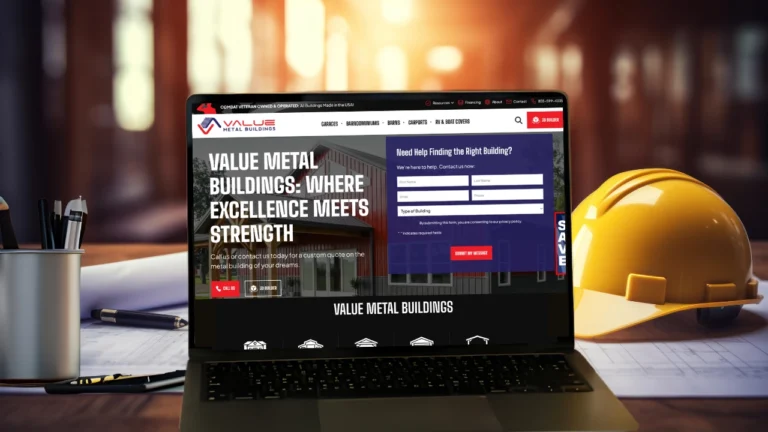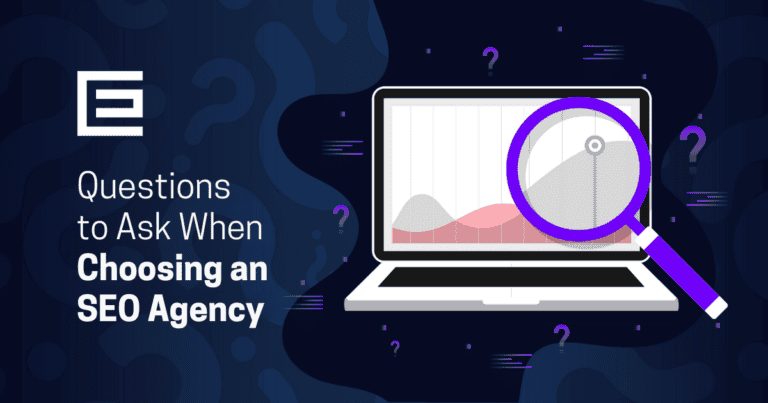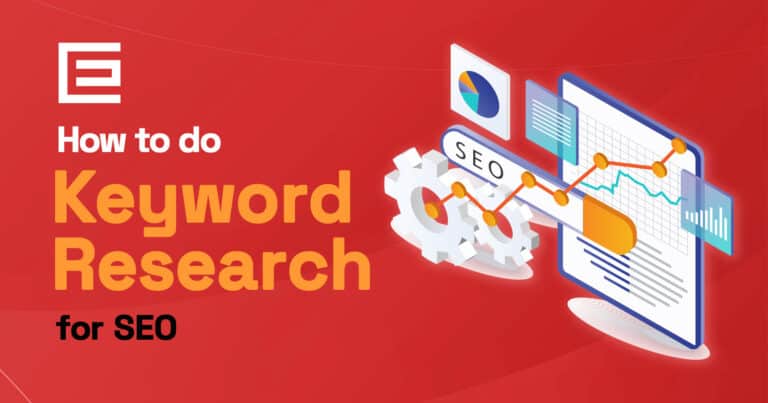Incognito Without Indexing
The single most important thing you can do when you have a website is to make sure that it is indexed by Google. When your site is indexed, it means that Google has crawled it and has added it to their search engine, and it can be displayed. If your site is not indexed, you will not be displayed in organic search. This is the number one curse to any web presence online, as it essentially means that no matter how good your website optimization, no matter how brilliant your targeting, no matter how beautiful your design, it will never be placed in Google’s search results and will never get any visits from the broader public. The easiest way to avoid the hex of not having an indexed site is to make sure your site has Google Analytics and Google Search Console:Unbound to Search Console or Analytics
The next way that your site can be cursed to forever remain in the mediocrity of SEO is to not utilize Google’s free tools to track your website’s performance and fix issues. These tools are Google Analytics and Google Search Console. Between the two of them, they allow you to view a bevy of statistics about how users find and use your website and any potential problems that said users might have when accessing it.Analyze Your Chances with Google Analytics
Analytics is Google’s one-stop-shop to see statistics about how your visitors get to your site, how long they stay there, what browser they use, where they’re from, and dozens of other statistics. It is a marketer’s dream come true, as you can measure each and every second of visitation on your site, and tweak constantly to optimize performance. Any SEO that doesn’t use Google Analytics doesn’t know what he or she is doing, and any company that ignores the obvious benefits of adding Analytics to their site will inevitably have coarser marketing than those who utilize Analytics to the fullest. One of my coworkers wrote a brilliant blog post on how to best analyze your Google Analytics data here.Recognize Threats and Opportunities with Google Search Console
Google Search Console (formerly known as Webmaster Tools) is another free Google tool to analyze the performance of your site, although it provides much less information about user activity. Instead, Search Console provides reams of data on site health, targeting, broken links, and rough performance in search results. One very important thing it also does is allow you to submit a sitemap for your website. These site maps make it easy for Google’s bot to crawl your website, which makes it easier for your website to get indexed, so reversing this curse can actually get you two successes in one. Another thing Search Console can help you identify is a bad link profile, perhaps as the result of old and misguided link building strategies or just no link strategy at all:Malign Link Influences
No matter how many times SEOs have said it, link building is far from dead. Links are still a key way that Google recognizes quality for its users and delivers content they want to see. Through good intentions or ill, your site might have a truly cursed link profile filled with either spammy links or no links at all.Disgusting Spam Links
In the olden days, it was fashionable to utilize strategies that paid for large volumes of low-quality links to do link building. Some of these strategies included commenting on other people’s blogs, taking part in link networks, unnecessary reciprocal linking, and buying paid links. These days, Google considers all of these tactics to be spammy link building that brings no value to the end user and smites them accordingly. If you wish to avoid the hammer of wrath, you should avoid spammy links.No Links At All
You look at Search Console and see naught but an empty link profile. Perhaps the beckoning wind or creaky floorboard shocks you out of your reverie as you gaze in horror at the scene in front of you. No links whatsoever. While this is uncommon as many sites tend to gain some links organically over their lifespans, it can be quite the shock to find that the site you thought was so well-optimized didn’t have any web presence anywhere else. Luckily for you, there exist ways to right this wrong and exorcise the curse of the empty backlink profile, and another of my brilliant coworkers has written on that here.The Curse of the Zombie Content
Maybe you’ve dodged the facelessness of not having your site indexed, kept your site bound by Analytics and Search Console, and narrowly avoided the trapdoor of shoddy backlinks. Your next challenge will be the curse of the zombie content. This is content that is either bad or just not there and can drown your site in a wave of inhuman pages that your visitors must fight through to reach the safety of the submission form.Bad Content or No Content At All
When you create content for your site, you want to make sure that it is quality content that people actually want to read. Many SEOs years ago used to play a version of mad libs where they would write one page then just slot in the keywords and locations where necessary. Some of them would even do it with programs that allowed them to just put in “keyword” “location” and have it spit out cookie-cutter content. A few years ago, Google decided that they had had enough, and started punishing sites for this computer-generated, keyword-stuffed content. This doesn’t seem to have deterred some people, however. You can find ugly copy-pasted content all over the internet with very little effort on your part. Instead of giving into the zombie plague of lazy writing, your site should embrace the cure and contain high-quality content targeted towards your users and their desires.Poor Keyword Targeting, or Not Aiming for the Head
Just like a stake to the heart is one of the only ways to guarantee that that vampire is going to stay down, so too is accurate targeting critical to getting the right users and keeping them on your site. If you’re not targeting the right users or the right keywords, no matter how much effort you put in, your sales and visits won’t reflect it. One of the first things you should do when launching a new project is research what keywords you believe are best and what keywords your customers often use. This is a sure-fire way to make sure that your content is the proverbial stake in the heart that gets you the sales and visits you desire.Abuse of H1 Tags, or Too Many Main Characters
According to Google, H1 tags are supposed to be used as the title of a page, while H2s are supposed to be the subtitles and the majority of your section headings. In this particular blog post, all of the 13 deadly hexes are H2s while only the title itself is an H1. Some writers, however, read a “Basics of SEO” article and start to add everything as an H1 or series of H1s. This is highly counter-productive, as H1s are merely supposed to be the title of the post, not the entire post. If Google sees an entire post as an H1, there’s a good chance that you will be punished for bad and spammy content.No Call to Action or Content Climax
At the end of your content, you should always have a call-to-action. These are basically “hooks” in your content giving visitors a reason why they should get in contact with you or purchase your product. They can be thought of as a trap in a horror movie designed to catch the monster so the heroes can unmask him or her. The call-to-action should be the conclusion of your content and should drive users to complete the action that you consider success, be it filling out a form, purchasing a product, or signing up for a newsletter. There are many tips, tricks, and tools that you can use to create the ultimate call-to-action, and you can learn more about them here.Outdated Design, Site Health, and 1960s Kitschy Horror
Much like how watching horror movies from the 1960s is more comedic than terrifying these days, so too does an old site design tarnish the impact that it certainly had when it was launched. If you’d like to keep your look fresh and effective, then making sure that your site is relatively modern is a must. While this does not directly tie into SEO, you could have the most well-optimized site with the best content and organization, but if it looks like your site was designed on GeoCities using nothing but HTML in 1999 then you will struggle to retain users:No Visuals
Think of all the scenes that your favorite horror movie paints without any sound at all. The darkened alleyway, the abandoned campground, the derelict industrial site. Your website is the same way. Without engaging pictures, your website’s “story” is dry and difficult to read. This is doubly true if you work in an industry such as painting, power washing, or construction. Your customers are looking to be sold on your product, and images speak a thousand words. If you would like to learn more about optimizing images for SEO, you can read my blog post here.Bad Navigation, the Outdated Map of the Temple
Imagine the characters in a horror movie. Perhaps they’re exploring an abandoned town or an ancient temple. Now imagine that they’re doing so with an inaccurate or outdated map. This is the situation in which you put your users if your site navigation is inaccurate, outdated, or poorly designed. How are they supposed to find the treasure (your submission form or product) if there’s no good map to get them there? Your navigation should be fine-tuned for this purpose. Keep your site sensible, categorize products according to what they are, where they are, or what needs they meet, and always make sure that your customers can follow the map from where they entered your site right to a conversion.Not Mobile Optimized, Out of Contact with Civilization
It is often the case in horror movies that the protagonists have no cell phone reception or no access to the outside world. Consider Agatha Christie’s novels and the isolation in which her characters find themselves. This is what happens to your website when it is not optimized for mobile phones. Mobile internet browsing has grown exponentially as phones have become faster and faster and is only set to rise, to the point where mobile-first development has become the norm rather than the exception. As such, not having a mobile-optimized website is essentially denying yourself access to a gigantic body of customers. This is doubly true for local businesses, as many of your customers will be searching terms such as “X near me.” Unless your site is optimized for the cell phones they are probably searching on, you won’t be able to acquire the foot traffic you can get from these searches. In addition, Google has started penalizing sites that do not have mobile optimization. As they are in the business of providing the best possible experience to their users, they do not like delivering non-optimized sites to mobile users and will often deliberately hide them in search results as a result. If you would like to learn more about why mobile optimization is important for your site, click here.Slow Site Speed, or No Excitement
Have you ever seen a horror movie that failed to live up to its potential because it took too long to get going? There is only so much that suspense can cover, and the same goes for your website’s load speed. If your site takes too long, chances are that visitors will go elsewhere to satisfy their needs. Amazon did a study that showed that one second of extra load time lost them a very significant amount of money. Though you are probably not on the level of Amazon, a long load time can dissuade customers (especially mobile customers) from continuing on to your website. It can also cause Google to dock your rankings, as you would otherwise be providing a sub-par experience for your users and thereby providing a subpar experience for Google’s users. If you’d like to learn more about why site load speed is important for your SEO, you can read a blog post about it here.No Ongoing Marketing Efforts, or Never Stop Running
Finally, if you want to continue dominating the search results, you have to stay in the game. The ultimate SEO hex is thinking you can do it for a while and be one and done. Much like the hero or heroine in horror films, you should never stop running. At TheeDesign, we often compare SEO to a marathon as opposed to a sprint, and we truly believe that the best SEO is constant and optimized for any new foci your company might have. Therefore, it is crucial to maintain efforts on your site, even if they are as simple as posting blogs or updating images.Avoiding Website Horror Stories with TheeDesign
As you can see by the number of blog posts I was able to link above, we are experts at preventing website hexes and horror stories here at TheeDesign. From content to site optimization to working within Google’s rules, we have the expertise necessary to help you get to your end goal safely.Looking for an experienced web design agency that can create a professional looking website for you that is search engine friendly, easy to manage, and dodges all the curses listed above? Contact our award-winning web designers and internet marketing professionals in Raleigh, NC at 919-341-8901 or schedule a complimentary consultation and website review.








